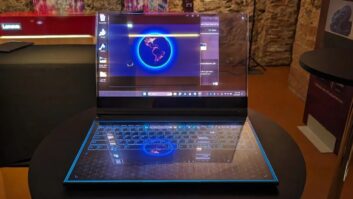San Francisco, Calif. — Pure Digital Technologies, makers of the first digital one time use camera (OTUC), announced a new version featuring a 1.4-inch LCD screen for reviewing and deleting images.
The preview OTUC will join Pure Digital’s existing digital OTUC that does not feature an LCD screen but offers the ability to delete the last image captured.
The company is also developing a “single use video camera” that is capable of storing up to 20 minutes of VGA quality video at 30 frames per second, said Simon Fleming-Wood, VP, marketing, Pure Digital. Consumers would fill the allotted memory on the video camera, return the camera and be given a DVD of their video. The DVD is created on the same image server platform that is currently used to develop photos stored on the digital still OTUC.
Pricing and availability have not yet been determined, but the video camera will be tested in some CVS locations this holiday, Fleming-Wood said.
The Pure Digital still OTUCs, with preview screen and without, are currently available at Ritz Camera Centers under the chain’s Dakota Digital brand and at national drug chain CVS in 1,000 of its stores as the CVS Digital One Time Use with Preview Screen. CVS plans to expand distribution to 3,000 stores by the holidays.
Walnut Creek, Calif.-based drug chain Longs drug will offer the display OTUC in November and two more “major drug chains” will offer the camera shortly, Fleming-Wood said.
The preview OTUC retails for a suggested $19.99; the price does not include processing and printing which is determined on a store-by-store basis. The camera can hold 25 photos and features an automatic flash, metered exposure control, and a 10-second self-timer. It is fully recyclable after use.
While Pure Digital does not advertise the exact resolution of the camera, Fleming-Wood said it uses a 1.3-megapixel CMOS sensor that captures uncompressed images. The lack of compression allows the Pure Digital server, which connects to digital minilab for producing prints from the OTUCs, to maximize image data and produce printed photos that look better than ones captured by traditional 1.3-megapixel cameras using JPEG compression, Fleming-Wood said.
“All the image processing that’s normally done in a camera is done on the server side, so we’re able to maximize the quality of the sensor data,” he said.
Pure Digital does not disclose the cost of its image server.
“Our business model varies with the type of retailer we’re working with,” Fleming-Wood said.
The server produces a photo CD with every camera developed. The CD includes the images stored on the camera in addition to a basic e-mail program, allowing users to create and share photos, slideshows and greeting cards.
According to Fleming-Wood, Pure Digital’s imaging server platform has uses behind single use digital still photography and video.
The platform can, via Bluetooth, a WAP-push or Internet download, embed camera-equipped cell phones with a program that will route camera phone images back to the server for in-store printing, giving retailers a chance to offer automatic camera phone printing directly from a cell phone.
The one time use camera was the last bright spot in an otherwise fading film market, growing from 430 million worldwide units shipped in 2003 to an estimated 460 units this year, according to market research firm IDC. Long term unit shipments will fall off, though, beginning next year as IDC predicts a steady downturn in one time use sales through 2008.
The category is threatened by both the rapid adoption of inexpensive digital cameras and the use of camera phones.
“If the single use category is going to survive, it has to go digital,” Fleming-Wood said. He noted that while camera phones could dent sales of digital single use cameras, “it will be years before Mom has the print quality phone, the infrastructure to support wide spread printing and is comfortable enough with the process” to embrace camera phones as a replacement to single use.













